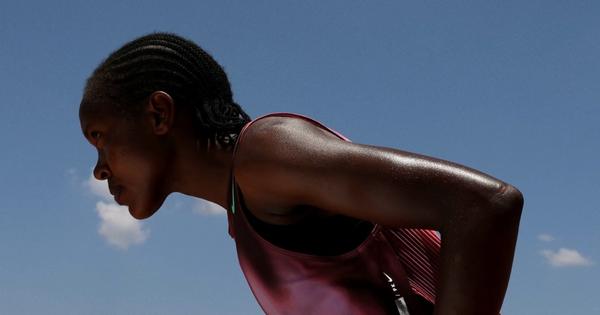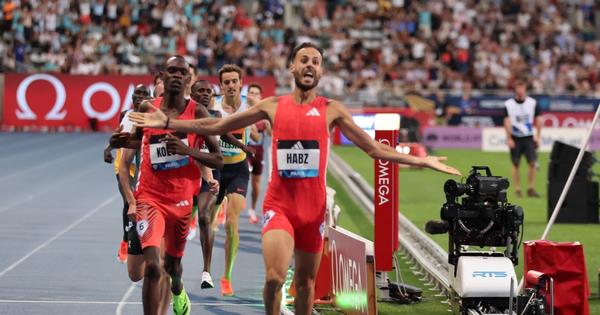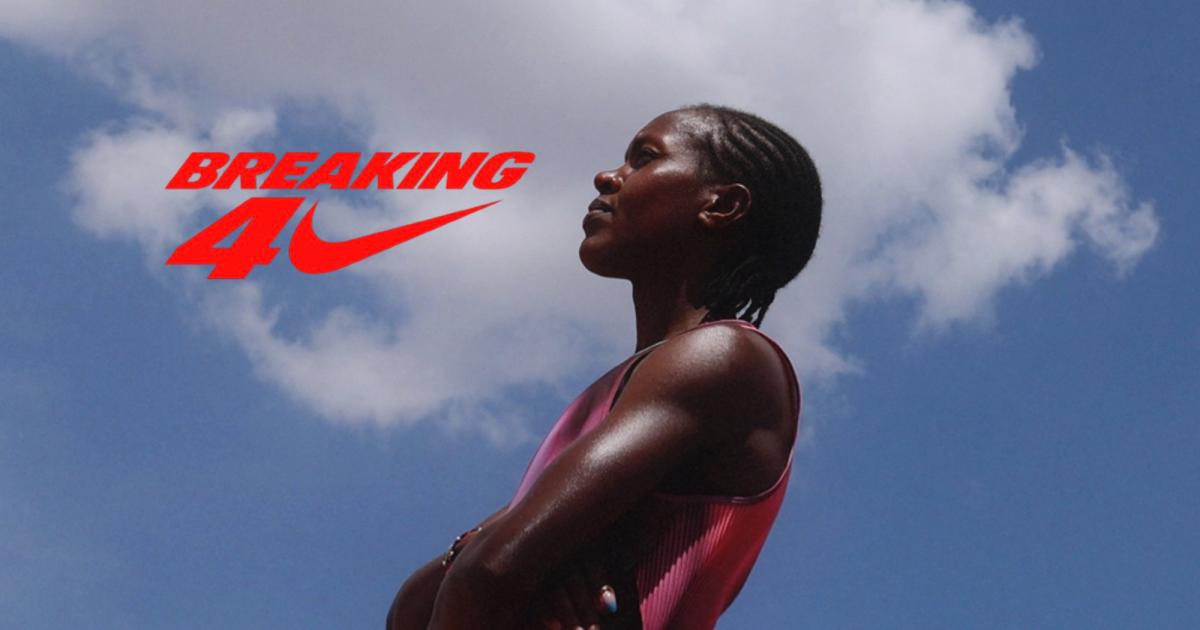By Paul Snyder
June 25, 2025
Late last week, Part 1 of Amazon’s Breaking4: Faith Kipyegon vs. The 4-Minute Mile series premiered. Part 2 will be the sub-four attempt itself on Thursday. Part 3, scheduled to air a month later, will presumably be a once-the-dust-settles, legacy-looking reaction to whatever transpired. This is a cool way to drum up interest, share the event, and process its impact, all in one place.
In a tight 50-minute package, the mini-doc attempts to tell the Faith Kipyegon story up to now, introduce the motivation behind her Nike-backed attempt to become the first woman to run a sub-four-minute mile, and set the stage for the big day in Paris. Breaking4 comes from Box to Box, the same production company behind all those wildly popular Netflix deep dives into generally more niche sports (including a previous foray into the world of track and field, SPRINT), so viewers will probably feel something familiar about the structure and flow.
The biographical depiction of Kipyegon leans heavily into her humble upbringing as the daughter of farmers who ran four kilometers barefoot to and from school each day as a 5-year-old. We even see clips of her racing barefoot en route to a fourth-place finish at the 2010 World Junior Cross Country Championships—her first international competition. From there we witness snippets of her meteoric rise through the senior ranks, punctuated by her 2016 Olympic gold medal in the 1500m.
It’s here that the filmmakers share what they posit is Kipyegon’s underlying motivation. It’s not world records or medals or to dominate the competition. It’s running as an act of service to her community. To give back in a very tangible way—her small village was connected to Kenya’s electrical grid after the Rio Games when news spread that her parents had to leave their hometown to watch their daughter’s heroics on television. It’s running to inspire.
This is presented as the foundation of Faith Kipyegon, the GOAT middle distance runner. A hardscrabble childhood where food at dinnertime wasn’t a given, a prodigious talent that shone through the adversity, a ceaseless sense of belief in herself, and the joy that has always accompanied the journey. In the aggregate, this is what led to her 4:07.64 mile performance in 2023.
It’s why she feels she has little left to prove on the track in terms of conventional accolades like placements and medals. We see footage of Roger Bannister looking like he’s going to die after becoming the world’s first sub-four miler, overlaid with footage of Kipyegon looking a whole lot smoother, running a similar pace.
If you’re clicking into this mini-doc by accident or out of a mild curiosity about the well-publicized Nike marketing campaign around the attempt, by now you’re invested in its history-making potential and in Kipyegon as an often-smiling, camera shy assassin who may just pull it off.
But for more diehard fans of running, there hasn’t anything earth shattering here for you yet. There are beautiful drone shots of Kipyegon and her teammates logging miles in the morning darkness and working out and relaxing at their training center. That’s all cool, but it’s not what you likely came for: answers to how in the hell Kipyegon will shave seven or eight seconds off her mile time.
The filmmakers, having anticipated this, promptly smash-cut to a series of very cool looking spaces at Nike’s Beaverton, Oregon, campus. We are shown Kipyegon’s spikes for the attempt, and are informed that precious grams have been shaved off their weight from a previous iteration, force-rebounding airbags have been plumped up. We see Kipyegon on a treadmill, hooked up to tubes and wires, her athletic vitals being precisely measured. There are heated discussions around the materials of her racing attire, how there’s a need to allow greater expansion of her chest cavity. Her speed suit is covered in nodes, which apparently improve its aerodynamics.
It’s a stark contrast to Kipyegon’s more “holistic” (as her performance director Valentijn Trouw describes it) training setup back home in Kenya. And if there’s a central tension presented, it’s where engineering and science end and human fallibility begins. We see Kipyegon drop out of her 2025-opening cross country race. We see her fall just short of the 1000m world record, which is roughly the pace she’ll need to cover for an additional 609m.
Everyone involved in the Breaking4 project appears very clearheaded about the fact that it's an audacious goal and that everything needs to be 100% perfect on Thursday for the clock to stop in the 3:59 range. If 97% of it comes down to Faith Kipyegon, maybe 1% of the equation is the footwear and apparel side of things.
We’re led to understand it’s the final 2% that’s proving tricky: the pacemaking and drafting configuration, plus brand-new spikes, will ultimately make the race non-World Athletics compliant. Even with the aid of Wavelight, Kipygon’s team of male pacers have a difficult task: running in a precise and unnatural formation to create the optimum wind pockets around Kipyegon, both breaking the wind for her and reducing drag behind her. One pacer will have to basically run a fartlek, hitting the curves hard to maintain his distance from Kipyegon, then slowing on the straights, all while not sucking her into an unevenly paced effort herself.
Like all the fanfare ahead of Eliud Kipchoge’s Breaking2, we’re essentially talking about one long Nike commercial, but it’s also very inspiring and a really interesting experiment. This doc should help with fan buy-in to the project. After tuning in, longtime fans of Kipyegon and newcomers to her corner alike will be cheering her on with equal gusto. Smartly, the focus of this media narrative is Kipyegon herself, not the whizz-bang scientific innovation that keeps the hamsters on the wheels in Beaverton. The lasting impact of this effort, success or failure, hinges on the public knowing—and liking—Faith the athlete. Regardless of whether she runs sub-four, in their minds, Kipyegon’s name will be synonymous with challenging the boundaries of human possibility.
We should be looking at the narrative approach here, because it’s powerful and replicable. In one media platform, we have a stakes-setting and well-made documentary that tells you everything you need to know to care. In the same place we’ll soon have the live event itself. And again, if you don’t practice great tab management, you’ll get a high-quality post-event recap there on July 25th, as well, working hard to cement the project’s lasting legacy and address whatever narrative spin has naturally occurred in the preceding month.
It’s not reinventing the wheel by any stretch of the imagination. And it’s unlikely Amazon will become track and field’s savior, even if in this one instance it’s pulling ESPN-duty and both hyping up and broadcasting an event. But anytime something somewhat novel, particularly when it’s this potentially historic, in the sport, it’s worth paying attention.

Paul Snyder
Paul Snyder is the 2009 UIL District 26-5A boys 1600m runner-up. You can follow him on Bluesky @snuder.bsky.social.




